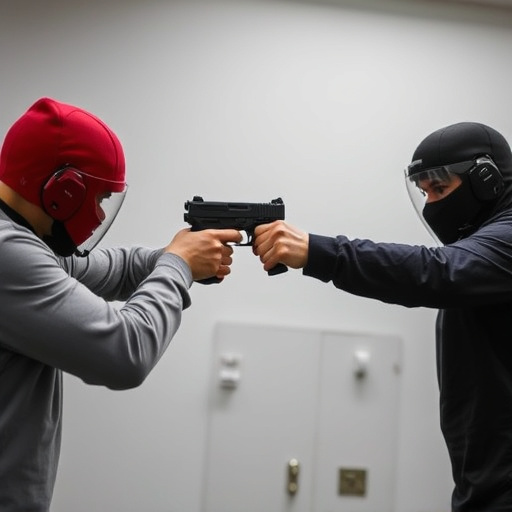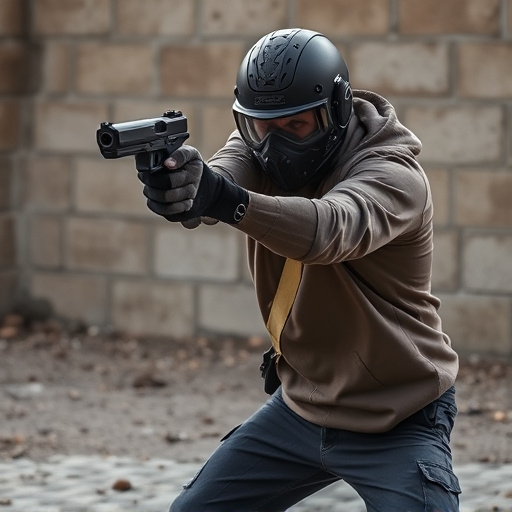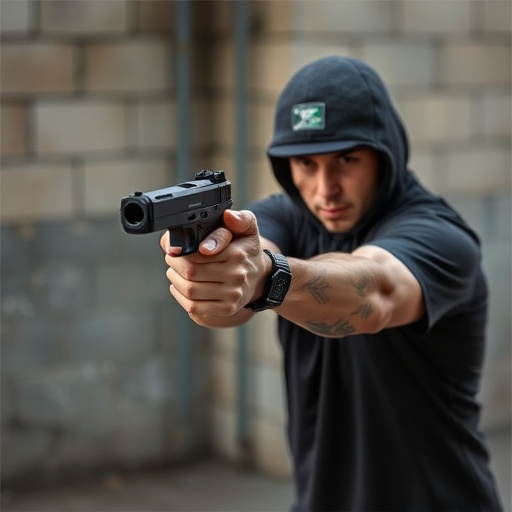Selecting best stun guns for senior citizens requires prioritizing safety and ease of use, considering devices with lower voltage settings and advanced safety features. The duration of incapacitation varies based on age, health, and environmental factors, with risks heightened for seniors. Ideal stun guns offer non-lethal force, adjustable voltage, ergonomic design, simple activation, bright flashlights, comprehensive manuals, and product demonstrations. Training, regular medical check-ups, and responsible use practices are crucial to ensure senior safety without compromising public safety.
In today’s world, understanding the impact of taser deployment is crucial, especially regarding paralysis durations. This article delves into the complexities surrounding stun guns and their effects on individuals, with a specific focus on seniors. We explore the factors influencing the length of paralysis, offering insights that could save lives.
By examining real-world case studies, we highlight the importance of choosing safe stun guns tailored for senior citizens’ needs. Additionally, best practices for responsible taser usage will empower readers to navigate this technology responsibly.
- Understanding Taser Deployment and Its Effects
- Factors Influencing Paralysis Duration
- Choosing Safe Stun Guns for Seniors
- Case Studies: Real-World Scenarios
- Best Practices for Responsible Use
Understanding Taser Deployment and Its Effects

Tasers, also known as conducted energy weapons (CEWs), are designed to temporarily incapacitate individuals through the delivery of an electric current. When deployed, these devices fire two small probes connected to wires that transmit a powerful electrical pulse, aiming to disrupt muscle control and cause temporary paralysis. The effects of a Taser can last for several seconds up to a few minutes, depending on various factors such as the model used, the proximity of the probes to vital areas, and the subject’s physical condition.
While Tasers are often considered less lethal than firearms, their deployment still carries significant risks. For senior citizens, who may have reduced mobility or health conditions, the impact can be particularly severe. Therefore, choosing the best stun guns for senior citizens involves considering devices with lower voltage settings and advanced safety features designed to minimize the risk of paralysis or other adverse effects. Understanding these dynamics is crucial when assessing the appropriateness of using Tasers in certain situations, especially given their potential consequences on vulnerable populations.
Factors Influencing Paralysis Duration

The duration of paralysis caused by a taser deployment can vary significantly due to several factors, which are crucial when considering the best stun guns for senior citizens or any demographic. The age and physical condition of the individual targeted plays a pivotal role; older adults may experience longer-lasting effects due to potential underlying health issues or reduced muscle mass. Moreover, the type and power of the taser used can significantly influence paralysis duration, with higher voltage potentially leading to extended periods of incapacitation.
Other considerations include environmental factors such as temperature and humidity, which can affect the body’s response to the shock. Moisture on the skin may alter the electrical conduction, while extreme temperatures could expedite or hinder muscle recovery post-stun. Additionally, individual differences in nerve sensitivity and overall health status can contribute to varying reaction times and duration of paralysis.
Choosing Safe Stun Guns for Seniors

When considering stun devices for senior citizens, it’s crucial to focus on safety and ease of use. The best stun guns for senior citizens should prioritize non-lethal force while ensuring minimal risk of injury. Look for models with settings that allow for adjustable voltage levels, as this allows users to deploy the device effectively yet safely, according to their strength and comfort levels. Ergonomic designs featuring soft grips and lightweight bodies can make the device easier to handle, reducing the chance of drops or misuses.
Additionally, features like simple activation mechanisms and bright flashlights can enhance usability for seniors. The best stun guns for senior citizens should also come with clear instruction manuals and safety guidelines tailored to their needs. Brands that offer detailed product demonstrations or tutorials can provide invaluable support, fostering confidence in the user’s ability to deploy the device properly in an emergency situation.
Case Studies: Real-World Scenarios

In real-world scenarios, understanding the paralysis duration from taser deployment is crucial, especially when considering the safety of senior citizens who may be more vulnerable to physical harm. Case studies have shown that the effectiveness and potential risks of tasers can vary greatly based on factors such as age, health conditions, and environmental conditions. For senior citizens, choosing the best stun guns becomes a critical consideration. Studies suggest that shorter-range tasers with lower voltage settings might be more suitable for elderly individuals, minimizing the risk of prolonged paralysis or other adverse effects.
These real-world scenarios highlight the importance of proper training for law enforcement and security personnel on how to safely deploy tasers against seniors. Additionally, regular medical check-ups before and after taser usage can help mitigate risks. By focusing on these practical considerations, it’s possible to ensure that senior citizens are better protected without compromising public safety.
Best Practices for Responsible Use

When considering the best stun guns for senior citizens, it’s crucial to emphasize responsible use and set clear guidelines for their application. The duration of paralysis induced by a taser should never exceed what is necessary to ensure safety and de-escalate a situation. Best practices recommend a brief stun to temporarily incapacitate, allowing time for law enforcement to arrive and resolve the incident.
Training is essential for all users, but especially for seniors who may have unique considerations. This includes learning proper target acquisition, understanding the weapon’s range and power settings, and being aware of potential side effects like cardiovascular responses. Responsible use also involves regular maintenance and inspection of equipment to ensure optimal performance when needed.
Taser deployment can lead to temporary paralysis, with duration varying based on multiple factors. Understanding these factors and adhering to best practices is crucial for ensuring safe and responsible use, especially in scenarios involving seniors. When considering safety, choosing the best stun guns for senior citizens that offer controlled stun power and ease of use is essential. Case studies highlight real-world impacts, emphasizing the need for training and moderation. By implementing these insights, we can navigate taser deployment more effectively, promoting safety without compromising necessary interventions.
